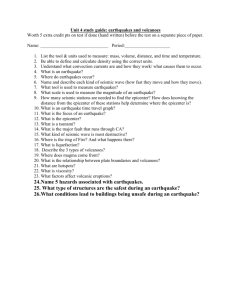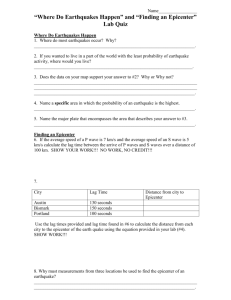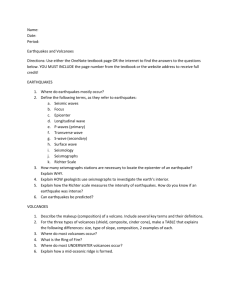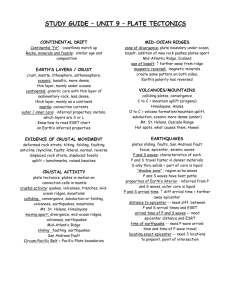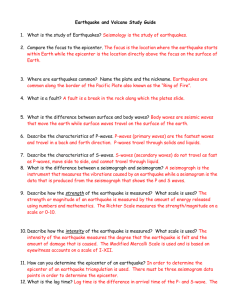Earth Science Review: Layers, Plates, Earthquakes
advertisement
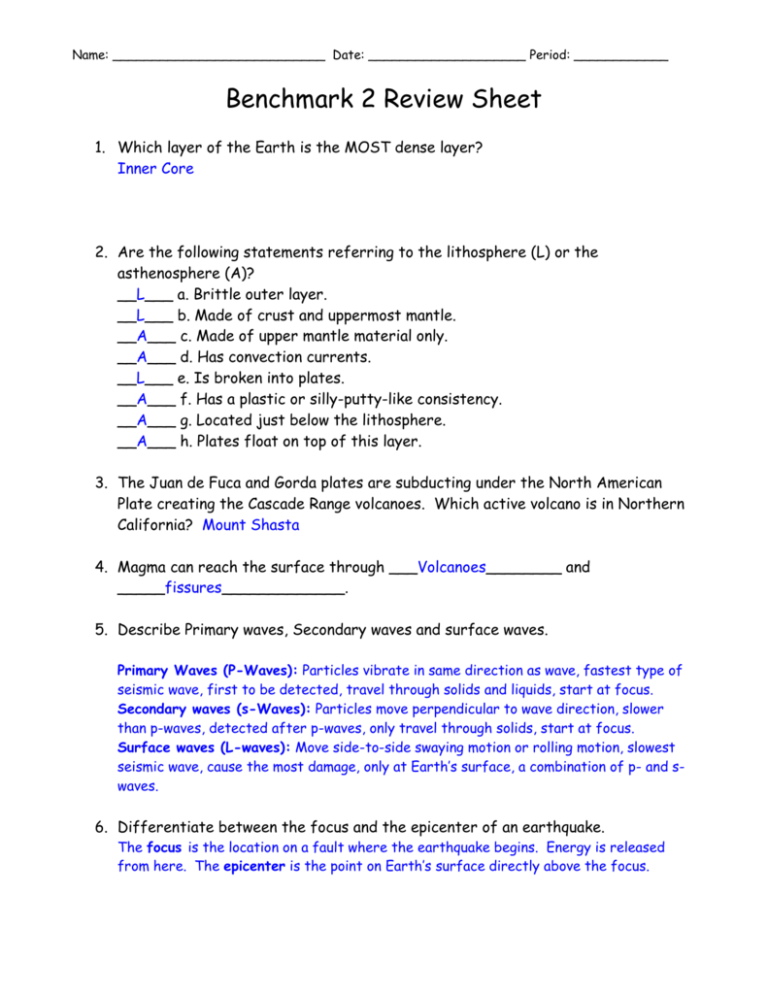
Name: ___________________________ Date: ____________________ Period: ____________ Benchmark 2 Review Sheet 1. Which layer of the Earth is the MOST dense layer? Inner Core 2. Are the following statements referring to the lithosphere (L) or the asthenosphere (A)? __L___ a. Brittle outer layer. __L___ b. Made of crust and uppermost mantle. __A___ c. Made of upper mantle material only. __A___ d. Has convection currents. __L___ e. Is broken into plates. __A___ f. Has a plastic or silly-putty-like consistency. __A___ g. Located just below the lithosphere. __A___ h. Plates float on top of this layer. 3. The Juan de Fuca and Gorda plates are subducting under the North American Plate creating the Cascade Range volcanoes. Which active volcano is in Northern California? Mount Shasta 4. Magma can reach the surface through ___Volcanoes________ and _____fissures_____________. 5. Describe Primary waves, Secondary waves and surface waves. Primary Waves (P-Waves): Particles vibrate in same direction as wave, fastest type of seismic wave, first to be detected, travel through solids and liquids, start at focus. Secondary waves (s-Waves): Particles move perpendicular to wave direction, slower than p-waves, detected after p-waves, only travel through solids, start at focus. Surface waves (L-waves): Move side-to-side swaying motion or rolling motion, slowest seismic wave, cause the most damage, only at Earth’s surface, a combination of p- and swaves. 6. Differentiate between the focus and the epicenter of an earthquake. The focus is the location on a fault where the earthquake begins. Energy is released from here. The epicenter is the point on Earth’s surface directly above the focus. Name: ___________________________ Date: ____________________ Period: ____________ 7. How do scientists determine the epicenter of an earthquake? Triangulation: First find the time between the arrival times of the p-wave and s-wave. Use the graph to determine the distance to the epicenter. Draw a circle around the seismograph location. Repeat with 2 other seismographs. Where the 3 circles overlap, that’s where the epicenter is. 8. When an earthquake strikes, different people will feel different amounts of shaking. What factors have an influence on the amount of shaking felt? Magnitude of earthquake Distance from epicenter Type of ground Type of building 9. Complete the data table below: Boundary Picture with arrows What happens there? (earthquakes, volcanoes, mtns, etc.) Earthquakes and mountains Convergent Continent to Continent Convergent Ocean to Continent Convergent Ocean to Ocean Earthquakes, volcanoes, mountains Subduction Earthquakes, volcanoes, mountains Subduction, island arc Fissures, earthquakes Divergent Transform MOR, rift valley Earthquakes, mountains if there is a curve in the fault
